The Singularity was brought on by some nanomachines known as orphids. The orphids used quantum computing and propelled themselves with electrostatic fields.
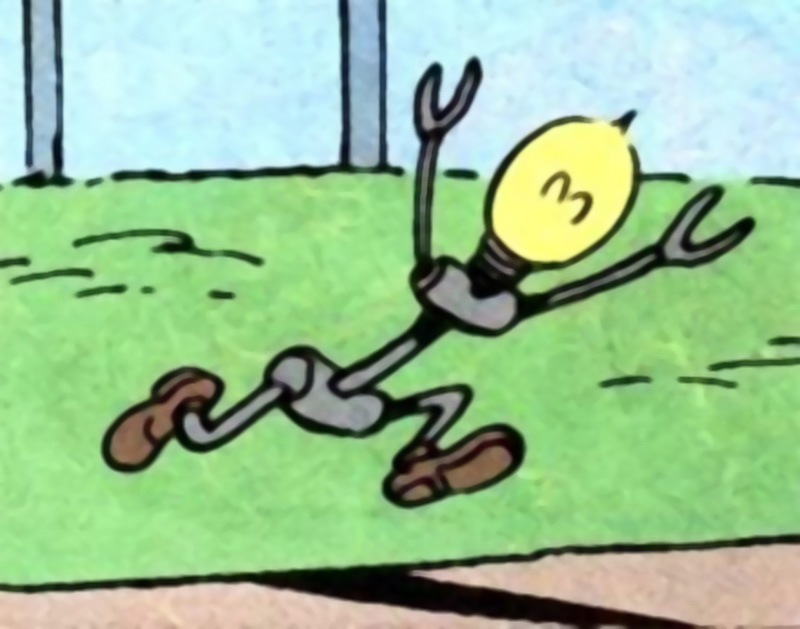
The self-reproducing orphids doubled their numbers every few minutes at first; fortunately, they’d been designed to level out at a sustainable population of some sextillion orphids upon Earth’s surface. This meant there were one or two orphids affixed to every square millimeter of every object on the planet. Something like fifty thousand orphids blanketed, say, any given chair or any particular person’s body. The orphids were like ubiquitous smart lice, not that you could directly feel them, for an individual orphid was little more than a knotty long-chain molecule.
Thanks to the power of quantum computing, an individual orphid was roughly as smart as a talking dog, possessing a good understanding of natural language and a large amount of extra memory. Each orphid knew at all times its precise position and velocity, indeed the name “orphid” was a pun on the early twenty-first-century technology of RFID or “Radio Frequency Identification” chips. Rather than radio waves, orphids used quantum entanglement to network themselves into their world-spanning orphidnet.
The accommodating orphids set up a human-orphidnet interface via gentle electromagnetic fields that probed though the scalps of their hosts. Two big wins: by accessing the positional meshes of the orphids, people could now effectively see anything anywhere; and by accessing the orphids’ instantaneous velocities, people could hear the sounds at any location as well. Earth’s ongoing physical reality could be as readily linked and searched as the Internet.
Like eddies in a flowing steam, artificially intelligent agents emerged within the orphidnet. In an ongoing upward cascade, still higher-level agents emerged from swarms of the lower-level ones. By and large, the agents were human-friendly; people spoke of them as beezies.
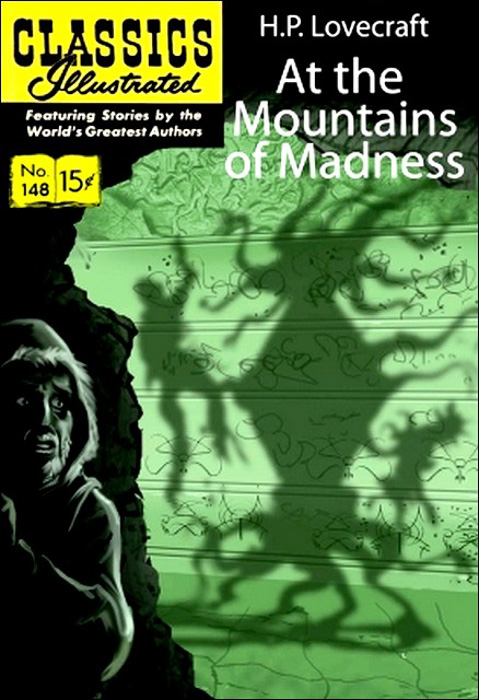
By interfacing with beezies, a person could parcel out intellectual tasks and store vast amounts of information within the extra memory space that the orphids bore. Those who did this experienced a vast effective increase in intelligence. They called themselves kiqqies, short for kilo-IQ.
New and enhanced forms of art arose among the kiqqies, among these was the multimedia metanovel.
In considering the metanovel, think of how Northwest Native American art changed when the European traders introduced steel axes. Until then, the Native American totems had been handheld items, carved of black stone. But once the tribes had axes, they set to work making totems from whole trees. Of course with the ax came alcohol and smallpox; the era of totem poles would prove to be pitifully short.
There were also some dangers associated with the orphidnet. The overarching highest-level-of-them-all agent at the apex of the virtual world was known as the Big Pig. The Big Pig was an outrageously rich and intricate virtual mind stuffed with beautiful insights woven into ideas that linked into unifying concepts that puzzle-pieced themselves into powerful systems that were in turn aspects of a cosmic metatheory—aha! Hooking into the billion-snouted billion-nippled Big Pig could make a kiqqie feel like a genius. The down side was that kiqqies were unable to remember or implement insights obtained from a Big Pig session. The more fortunate kiqqies were able to limit their Big Pig usage in the same way that earlier people might have limited their use of powerful psychoactive drugs.
If the Big Pig was like alcohol, the analogy to smallpox was the threat of runaway, planet-eating nanomachines called nants—but I won’t get into the nants here.
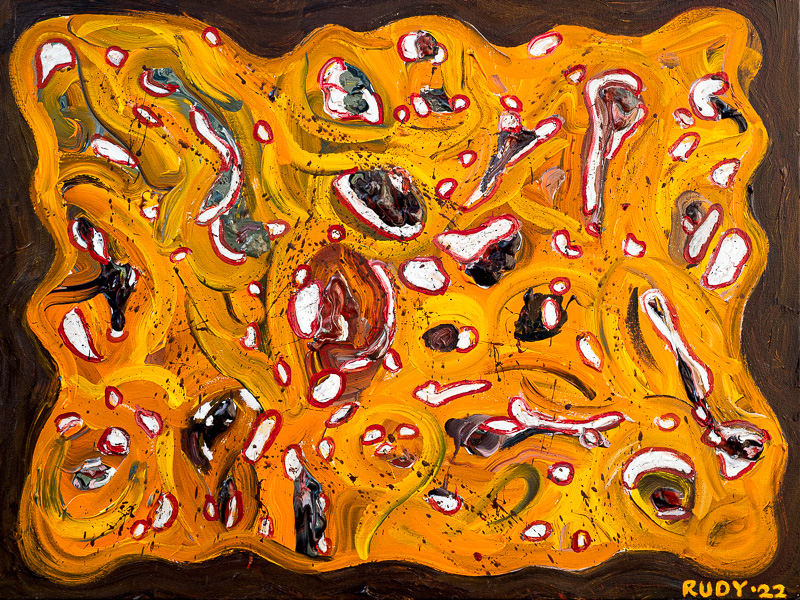
“Covid: Third Year” Jan, 2022, 40 x 30, acrylic.
Although the postsingular metanovelist Thuy Nguyen had some trouble with Big Pig addiction, she eventually recovered and began work on her remarkable metanovel Wheenk. Thuy wanted Wheenk to be a transreal lifebox, meaning that her metanovel was to capture the waking dream of her life as she experienced it—while sufficiently bending the truth to allow for a fortuitously emerging dramatic plot. Thuy wanted Wheenk to incorporate not only the interesting things she saw and heard, but also the things that she thought and felt. Rather than coding her inner life into words and real-world images alone, Thuy included beezie-built graphic constructs and—this was a special arrow in her quiver—music. The effect was compelling; in later years users would say that accessing Thuy’s work was like becoming Thuy herself.
Among Thuy’s metanovelist friends during the time she worked upon Wheenk were Gerry Gurken, Carla Standard, John Medford, and Linda Loca. Each of them had their own distinctive approaches to creating a metanovel.
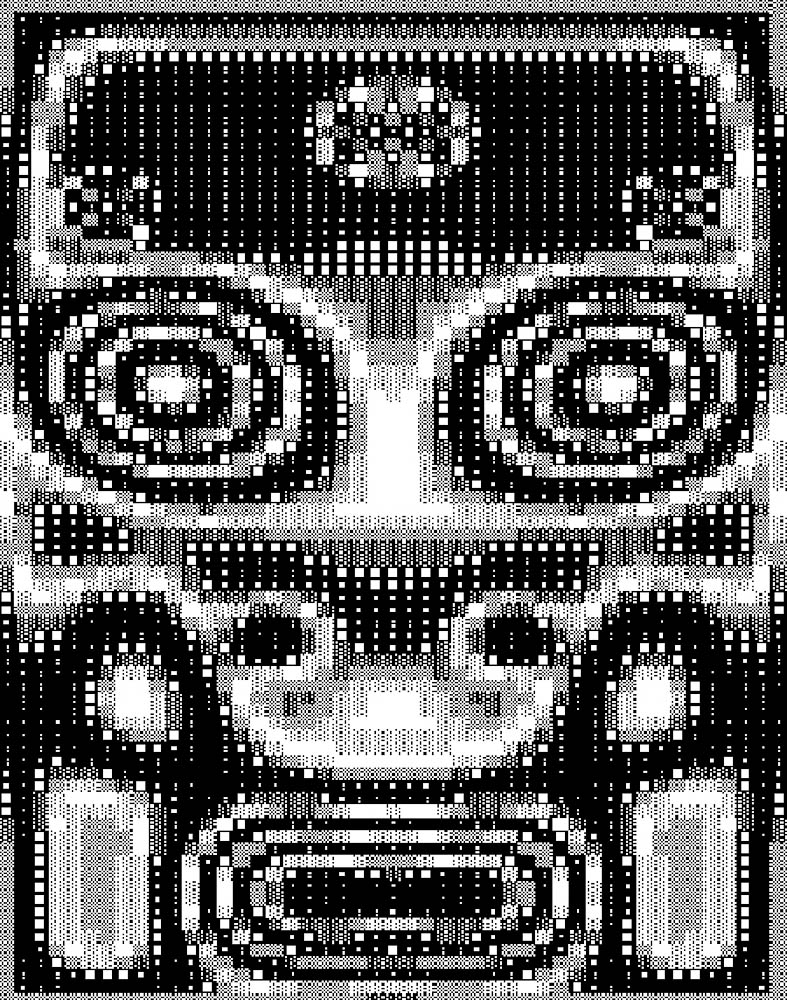
Gerry’s metanovel Banality was a vast combine of images all drawn from one and the same instant on a certain day. No time elapsed in this work, only space, and the story was the user’s gradual apprehension of a vast conspiracy woven throughout not only our world but also throughout the worlds of thoughts and dreams. The images were juxtaposed in suggestive ways, and were accompanied by a spoken voice-over delivered by a virtual Gerry Gurken who wandered his memory-palace at the user’s side.
Gerry’s title, Banality, had an ironic resonance, for his timeslice was located at orphidnet time-zero, that is, 12:00:00 PST on the first day after the beezies had implemented their protocol of having the orphidnet save, a hundred times per second, the positions and velocities of every orphid on Earth. This postsingular moment marked the day when history had truly changed forever, and what did Gerry find there? Human banality, the same as usual—but with something odd and sinister beneath the surface.
By the way, Gerry, who was a convivial and gregarious sort, preferred to select the images for Banality not by browsing in the orphidnet time-zero database, but rather by roaming the realtime streets. He had a good eye; he saw disturbing connections everywhen and everywhere. Often as not, the beezies were able to scroll back from current sightings to find nearly the same image in the orphidnet time-zero database, but even when the match was wildly inaccurate, that was fine with Gerry too. To his surrealist sensibilities, a cauliflower was as convulsively beautiful as a catfish.
Banality would have taken hundreds or even thousands of hours to explore in detail, and it bulked larger every day—in that sense Banality was like a blog, albeit a blog eternally focused upon a single global instant of time. Any ten-minute block of the work was fascinating, disorienting, and revelatory—leaving the user’s mind off-center and agog. Unfortunately, by the twenty-minute mark, most users found Banality to be too much. The work was like some bizarre, aggressively challenging sushi bar that the average person abandons after tasting only a few dishes: geoduck, sea cucumber, nudibranch, and jellyfish, say, and then it was always, “Thanks so much, very interesting, gotta go.”
The metanovelists occasionally experienced the phenomenon of having one of their characters send messages to them—they called this feedback phenomenon blowback. Gerry Gurken, for one, had regular visitations from the simulated Gerry Gurken of Banality, the virtual Gerry clamoring that he wanted metanovelist Gerry to edit in a girlfriend character for him. Telling this story, portly Gerry would dart hot intense looks at Thuy Nguyen, as if he were planning to feed a model of her to virtual Gerry, which was perfectly fine with Thuy, and she said so, Thuy being in a lonely-but-coned-off emotional state where she was ready to accept any admiration she was offered, as long as it was virtual and with no strings attached.

Intense, lipsticked, nail-biting Carla Standard used what she called a simworld approach in creating her metanovel You’re a Bum! Her virtual characters were artificially alive, always in action, and somewhat unpredictable, a bit like the nonplayer characters in an old-school videogame. Rather than writing story lines, Carla endowed her characters with goals and drives, leaving them free to interact like seagulls in a wheeling flock.
You’re a Bum! was experienced through a single character’s point of view, this protagonist being a homeless young woman who was enlisting people to help her unearth the truth about the mysterious disappearance of her kiqqie boyfriend. There was some chance that he’d been abducted by aliens. The heroine was bedeviled both by her mother’s attempts to have her brought home, and by the advances of a predatory pimp. Backing her up were an innocent younger-brother figure, a potential new boyfriend, a mysterious federal agent, a wise old Big Pig addict, and a cohort of hard-partying kiqqie friends.
For the You’re a Bum! dialogue and graphics, Carla had her beezies patching in data from the day-to-day world: conversations of kiqqies in San Francisco bars, shops, apartments, and alleyways. Each user’s You’re a Bum! experience was further tailored with data drawn from the user’s personal meshes and social situations. In other words, when you accessed Carla’s metanovel, you saw something vaguely resembling your own life.
By the way, Thuy Nguyen’s two sessions with You’re a Bum! proved painful, even lacerating. First she’d relived a moment when she and her former boyfriend Jayjay stood under a flowering plum tree in the Mission, Jayjay shaking the tree to make the petals shower down upon her like perfumed confetti, all the while Jayjay’s eyes melting with love. And then she’d seen their breakup, but more objectively than before, with the simulated Thuy hungover from the Big Pig, her clothes in disarray, Thuy hysterically screaming at Jayjay in a metapainting-lined alley, and poor Jayjay’s trembling fingers nervously adjusting his coat and hat.
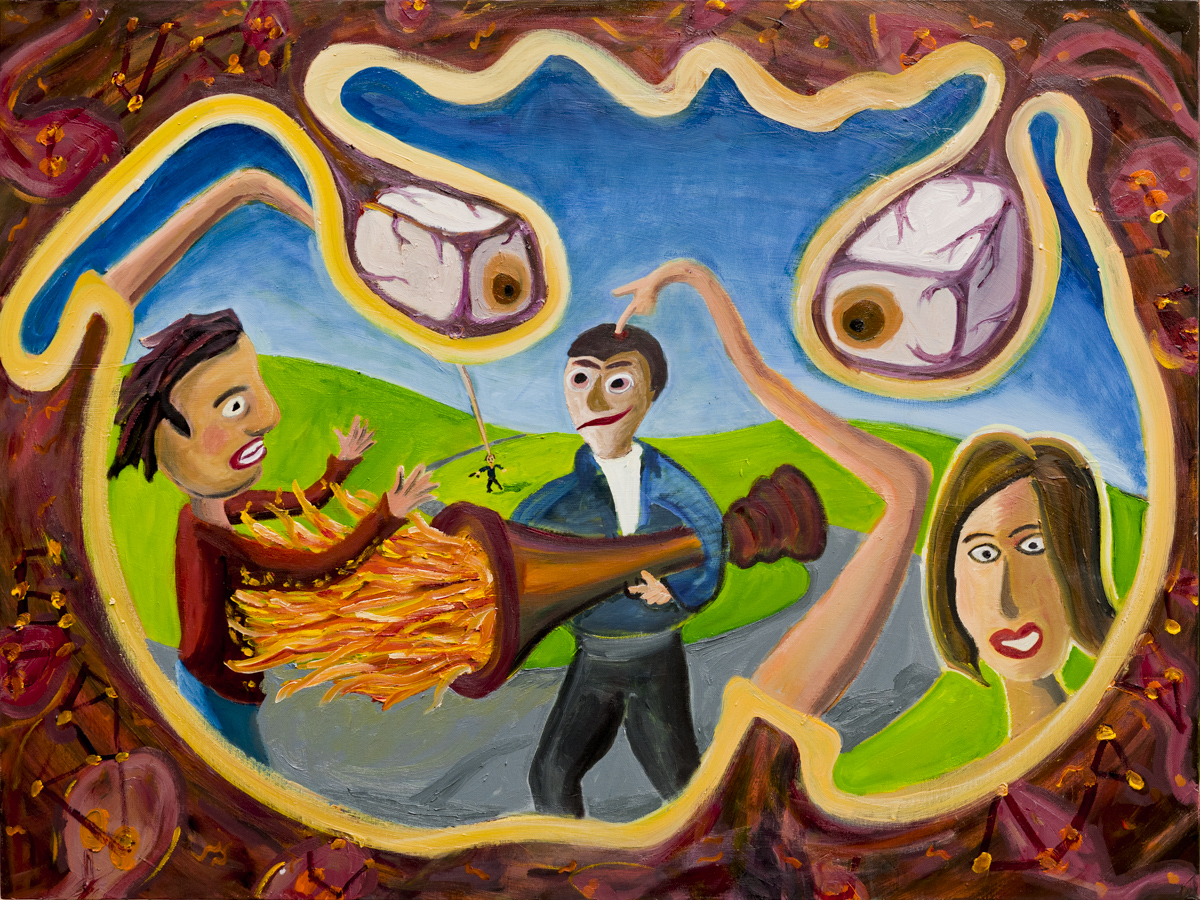
Like Gerry Gurken, the excitable John Medford was one of Thuy’s admirers, but he held little physical appeal for her. He was too thin and overwrought, too dandruffy, too needy. As part of his doomed campaign to engage Thuy’s affection, Medford had undertaken The Thuy Fan, an unwriteable and unreadable metanovel wherein every possible action path of his young heroine Thuy would be traced. Waking up with a man, a woman, or nobody in bed beside her, Thuy hopped out of the right or left side of her bed, or perhaps she crawled over the head or the foot. She put on her slippers or threw them out the window, if she had a window. In some forkings she jumped out the window herself, but in most she went to take a shower. In the shower she sang or washed or had sex with her partner. And when she emerged, she might find a table by her bed bearing a breakfast of lox, lobster, steel-cut oats, or a single boiled ostrich egg. In some forkings, Thuy had no time to eat, as her house was on fire, or menaced by an earthquake or a giant ant.
In practice no human author would have had the time and energy to contemplate so richly ramified a document as The Thuy Fan, but John Medford had his beezies helping him by autonomously roughing in sketches of ever-more action paths. As the mood struck him, Medford would add voice-over descriptions to the paths; he had a flair for making anything at all sound interesting. But, densely tufted as the branchings were, Medford only managed to fully polish Thuy’s action fan for the first two and a half seconds of her day. Random assassins, meteorites, a stroke, the spontaneous combustion of Thuy’s pillow—so many things were possible. And, insofar as Medford’s goal was to charm the real world Thuy into his arms, The Thuy Fan was a failure. Medford eventually set the work aside, declaring it to be finished.
As his next project Medford began an inversely forked work called April March, lifting both his title and concept from the celestial pages of Jorge Luis Borges. Medford’s plan for April March was to start with a scene on a particular day and to document plausible variants of what happened on the days before. To make the work more tractable than The Thuy Fan, Medford was austerely limiting his branching factor to one fork per day. The initial scene, set on April 1, would present an ambiguous conversation between a man and a woman at an airport, followed by two versions of March 31, four versions of March 30, eight versions of March 29, and so on. Medford planned to march as far as March 24, making a thousand and twenty-three scenes in all, linked together into five hundred and twelve plausible action paths which would constitute, so John claimed, an all but exhaustive compendium of every possible kind of detective story.
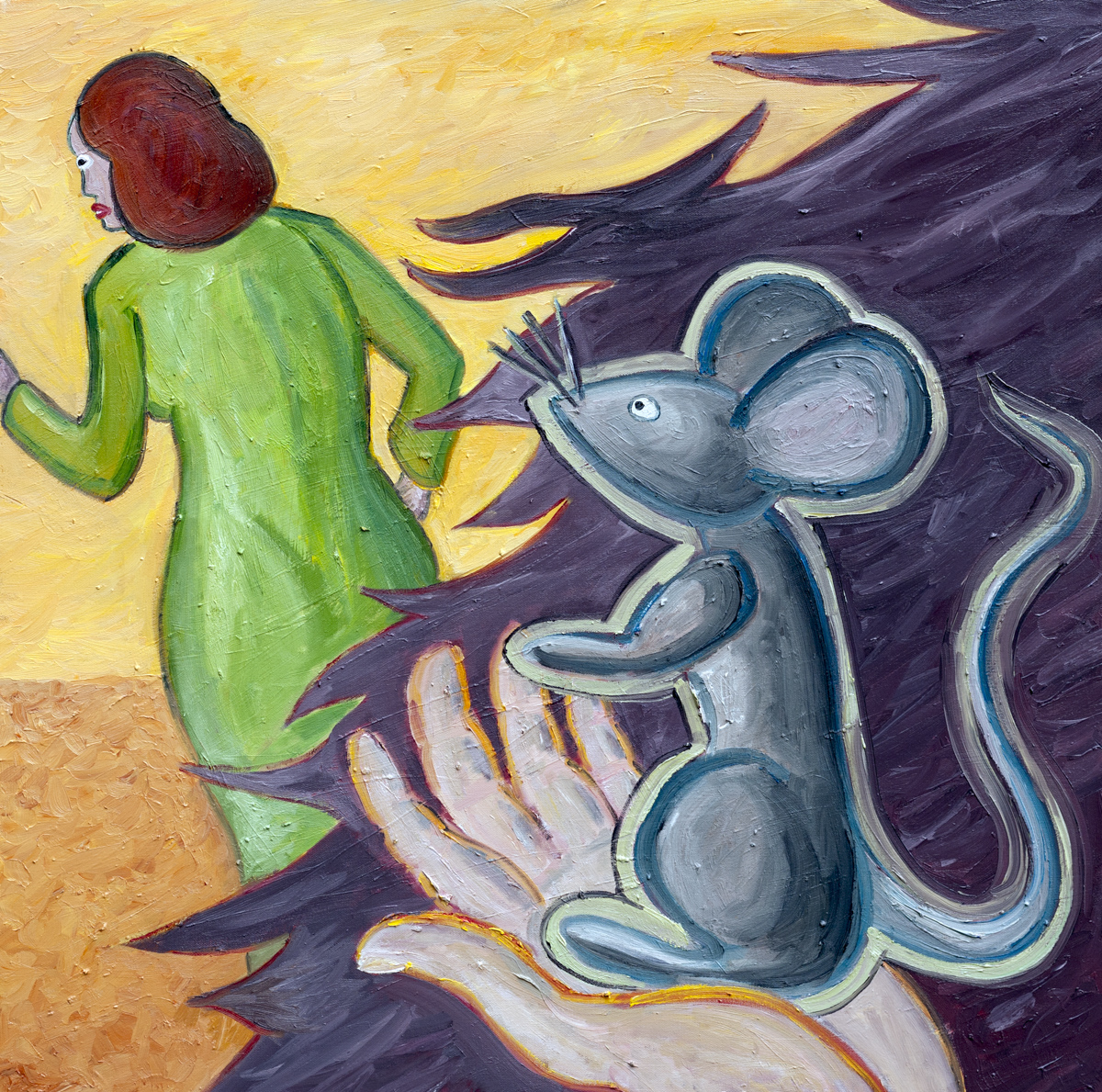
Bouncy Linda Loca created a metanovel entitled George Washington, depicting the world as seen from the point of view of a dollar bill. What lent her work its piquancy was how literally she’d managed to execute the plan: while perusing George Washington you felt flat and crinkly; you spent most of your time in a wallet or folded in a pocket; and when you came out into the air the main thing you saw was countertops and people’s hands. The beezies had helped by providing Linda with the life histories of real, orphid-meshed bills. The user could of course scroll past the dull parts, but the presence of the realistic data gave the work heft and seriousness.
When, once in a great while, Linda’s George Washington dollar changed hands, the bill moved the story along by buying drinks, influence, or sex, and thereby sketching the rise and fall of a young cop whom Linda had named George Washington as well. Young officer Washington became corrupted due to his sexual attraction for a promiscuous older woman named Donna, who talked him into executing a hit on her landlord, who turned out to be George’s biological father, this fact being unknown to George until too late.
For a time, Linda had blowback issues with her George Washington character because, to round him out, she’d made him an aspiring writer. Problem was, George began pestering Linda with messages about her metanovel—dumb suggestions, by and large, for the character was, after all, only a beezie simulation of a human, and not a true artist. He failed to grasp, for instance, the dark, erotic beauty of a four-hour scene consisting of the slow shifting of the dollar within a felt-appliqué wallet in Donna’s tight jeans while Donna trolled Mission Street for men. By the same token, George was unable to understand that the precise convex pressure of his own virtual buttock upon the eponymous dollar as he sat writing at his virtual desk might be more interesting to his creator Linda Loca than what he wrote.
Weary of arguing with her character, Linda edited out virtual George’s love of writing, and made his hobby bowling instead.
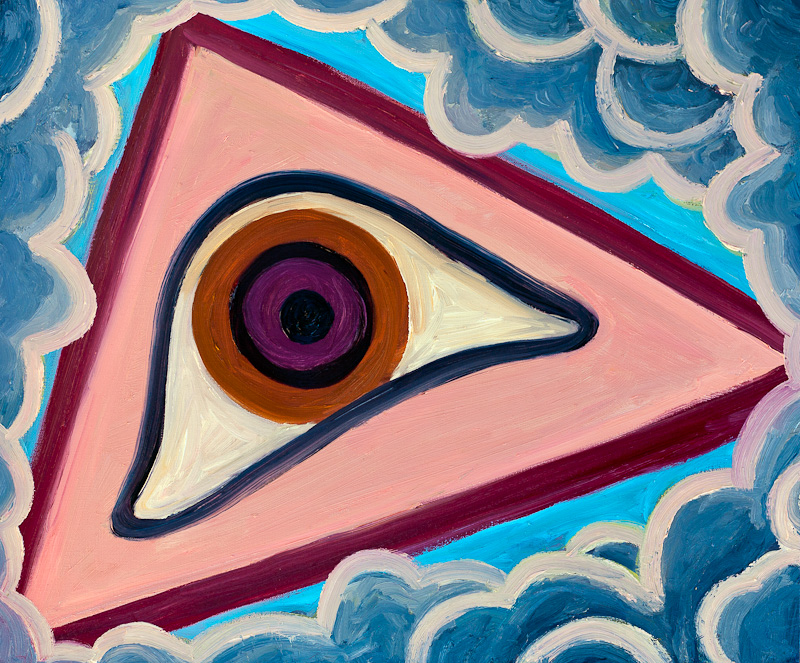
As it happened, Thuy’s old boyfriend Jayjay ended up with Linda Loca. And then, while trying to prevent an outbreak of nants, Jayjay died. In the instant of extreme grief and despair when she learned of Jayjay’s death, Thuy finally finished Wheenk.
The pieces of the metanovel came together like a time-reversed nuclear explosion. Her adventures in the kiqqie underworld of San Francisco, her lost love for Jayjay, her worries about the threat of the nants, a particular cone shell she had on her dresser, her mother’s face the day Thuy had graduated from college, her father’s bare feet when he tended his tomato plants, the dance Thuy had done down the rainy street one night while exulting over her metanovel—everything fitting, everything in place, Wheenk as heavy and whole as a sphere of plutonium.
Her Great Work finally done, Thuy pulsed the Wheenk database to the global orphidnet. Her pain had produced artistic transcendence.

Note on “Visions of the Metanovel”
Written May, 2006.
Mad Professor, 2007.
Reprinted in Complete Stories.
In the summer of 2005, I read Accelerando, a collection of linked short stories by Charles Stross (Ace Books, 2005). These stories had a tremendous effect on me; Stross showed that it’s possible to go ahead and write about what happens after the co-called Singularity.
As many readers will know, the Singularity is a notion invented by the novelist and computer scientist Vernon Vinge in a 1993 talk—to read the original talk, just search the web for “Vinge Singularity.” Vinge pointed out that if we can make robots as intelligent as we are, then there seems to be no reason that the robots couldn’t plug in faster processors and bigger memories to then be more intelligent than people. And then—the real kicker—these superhuman robots can set to work designing still better robots, setting off an upward cascade of ever-more-powerful machines.
Some timid souls have suggested that writers and futurologists must stand mute before the Singularity, that there’s no way for us to imagine the years beyond such a cataclysmic change. But, hey, imagining the unimaginable is what thought experiments are for! And Stross shows us how; he blows right past the Singularity and deep into some very bizarre and fun-to-read-about futures.
In his Accelerando the solar system has become concentric Dyson spheres of computing devices with only our Earth remaining like “a picturesque historic building stranded in an industrial park.” And some minds in the shells want to smash Earth, simply to enhance their RAM and their flop by a few percent.
This struck me as being no different, really, from people wanting to fill a wetland to make a mall, to clear-cut a rainforest to make a destination golf resort, or even to kill a whale to whittle its teeth into religious icons of a whale god. I was outraged. But also very intrigued by the idea.
And so I began writing my novel Postsingular (2007). The novel opens with an attack of world-eating nanomachines called nants. The nants are rolled back, at least temporarily, and then one of the characters introduces a more benevolent kind of nanomachines called orphids, as described in “Visions of the Metanovel.”
I’m very intrigued by the question of what kind of art we might make given vastly improved abilities. By way of researching the question, I studied Jorge Luis Borges’s visionary writings, particularly his tale, “A Survey of the Works of Herbert Quain,” which indeed describes an imaginary novel called April March. (The Quain piece appears in, for instance, Jorge Luis Borges, Collected Fictions.) Also of use to me in this context was the Stanislaw Lem’s 1979 book, A Perfect Vacuum, in which he reviews a series of nonexistent books.
Although Postsingular features a kiqqie metanovelist named Thuy Nguyen, I didn’t include the full text of “Visions of the Metanovel” in my novel. My sense is that people reading a novel don’t want to negotiate a bulky sequence of intellectual games. But I felt that the games might seem amusing if presented as a single short piece.









January 15th, 2022 at 7:25 am
Hi Rudy,
I’m a long time fan. But quite disappointed about a bit of cultural appropriation on this post. You used a portrait of a Māori woman without context or attribution. Her name was Ena Te Papatahi, and she was painted many times by CF Goldie.
January 15th, 2022 at 6:42 pm
Hi Joanne. I understand your feelings, and thanks for your comment. And I apologize for showing the picture without context. I think I photographed the painting when we were visiting Aukland in 2006. I was really struck by the beauty and solemnity of Goldie’s portraits of Māori. I though it would be okay to share the image, but I don’t like to cause offense, so I’m taking it down. By the way, in 2006 I put up a post about “Ta Moko,” that is, about facial tattooing among the Maori. It evoked some really interesting comments from Maori, delving more deeply into this tradition. Here’s the post, which does include that image, but in context. https://www.rudyrucker.com/blog/2006/12/07/new-zealand-part-3-ta-